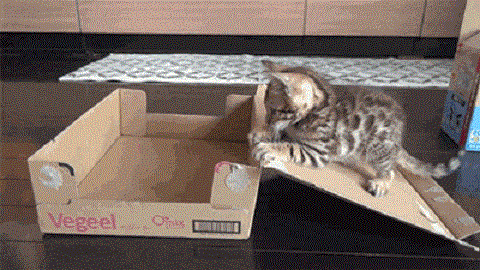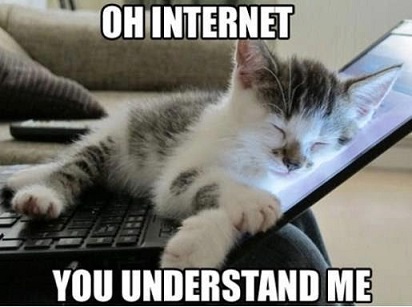Cat Pics & Virality: Not as Simple as You Think. 5 Psychological Insights to Help You Win at Marketing
Who let the cats out……on social media? If you posted a nice picture of yourself, your new home and your cat snoozing on the couch, chances are your moggy will get the highest number of likes. A fifth of cat owners who create social media account for their furry companions admit to doing it because they feel their pet is more interesting than they are.
Here are some social media analytics to show you just how popular cats are on the internet.
- As of 2015, there were over two million cat videos on YouTube, attracting an average of 12,000 views, higher than any other category on the site.
- One hour of cat video is uploaded to YouTube every second. More cat-related photos and videos are uploaded every day compared to selfies.
- Nala the cat has 2.7 million Instagram followers, surpassing tennis superstar Maria Sharapova and Pope Francis.
- More than 350,000 cat owners have created social media accounts for their pets, with WhatsApp, Instagram, Vine and Twitter being the most preferred platforms for image and video sharing.
Why is social media populated with cat videos and pictures? Here are five possible reasons.
1. Cats being cute or crazy = Free mood improvement therapy

A survey of 7000 internet users reveals that cat videos make us feel happier and more positive. This effect on people’s emotions was similar to that experienced after spending time with a therapy cat. Watching cats being cute and doing their thing alleviated anxiety and boosted moods.
Digging deeper, you realize that the phenomenal popularity of felines online isn’t exactly new or radical. It is a widely accepted concept that people turn to media to focus away their current negative state. Before new media became so accessible, comics and sitcoms helped people beat the blues. Now it’s cat videos and memes.
Why the cat bias? Studies indicate that people with introverted tendencies are more comfortable spending their weekends surfing the web than hitting the bar or going on a camping trip. They also happen to be cat people versus dog people. Imagine a population of hundreds and thousands of not-very-sociable people binge-watching cat videos on YouTube, commenting on them and sharing them with friends, and you’ll understand why cats have a special place on the internet.
2. Cats satisfy our craving for aesthetic experiences and desire to nurture entities weaker than us

Stanford professor Sianne Ngai has been studying the impact of entities perceived as ‘cute’ in human emotions. She says that we tend to adopt a more sentimental attitude towards small, weak, soft and seemingly non-complex objects. Cats and babies fall into this category, their round faces, big eyes and non-threatening nature creating a desire among us to cuddle them and take care of them. She calls it a way of ‘aestheticizing powerlessness’, and believes that the attitude is a trait of the capitalistic culture we live in.
Ngai also draws a distinction between ‘cute’ and ‘beautiful’; the latter is always a judgment upon someone’s physical appearance, while the former can be criticism or praise. In his book Cute, Quaint, Hungry and Romantic: The Aesthetics of Consumerism, Daniel Harris puts forth the idea that disempowerment and cute are closely linked. He cites the examples of soft toys with a band-aid or eye patch, and the silly, simple-minded antics of Winnie the Pooh. In the internet catdom, examples include Oskar, the blind kitten and YouTube sensation, and brave little HoneyBee, a blind kitten whose hiking trips with his owners have amassed over a million hits on YouTube.
3. Cats are more expressive than dogs

Does Grumpy Cat remind you of your sullen headmaster or an ill-tempered uncle? Doesn’t Sam, the cat with worried eyebrows, tug at your heartstrings? Doesn’t Maru, the Japanese cat’s love for all kinds of cardboard containers tickle your funny bone? Why do cats elicit more attention from their antics than dogs?
If you’ve seen a couple of cat videos or memes, you’d probably have the answer to this question. Cats are more facially and physically expressive than dogs (check out the late Colonel Meow), and the computer screen milks it for all it’s worth. At the height of its popularity when it was recording over three hundred million hits a month, weblog I Can Has Cheezburger – which featured humorouspictures of animals with captions – would receive ten times as many submissions for LOLCats as Hot Dogs from people.
Another explanation for the cat bias is that, as cats are naturally cool, it’s more fun to see them get into predicaments. The reverse is also true, just as scaredy-cats (no pun intended) and jittery kittens amuse internet audiences, cool cats with a seemingly serene, almost superior attitude (such as Grumpy Cat, whose unique expression is actually a result of dwarfism and an underbite) also make us laugh.
4. The internet is a safe, communal space for cat owners

There’s nothing appealing about the crazy cat lady/person stereotype. Dog owners don’t have to deal with this stigma. In a study of dog owners versus cat owners, the former trumped the latter on all well-being metrics. While it’s wrong to rely on a single study and paint all dog/cat owners with a broad brush, the stereotype about cat owners being introverted and neurotic, exacerbated in popular culture by characters such as Eleanor Abernathy aka the Crazy Cat Lady in The Simpsons, has seeped into our collective conscious.
Could it be that the internet is a more comfortable place for cat owners to celebrate their love for furry felines without being discriminated against or at least calm the uneasiness that they’re being discriminated against, whether or not they actually are? Given the massive popularity of cat videos, it is possible that the internet empowers cat owners and serves as a platform to connect with fellow cat owners and aficionados. Dog owners have dog parks. Cat parks are unviable for health and environmental reasons. Cat owners don’t have a physical community to hang around with their pets and socialize with one another. In such a scenario, the internet has stepped in to become their social community to engage with fellow cat owners.
Save time managing your social media accounts
Are you still managing your social media accounts directly from Facebook/Twitter/LinkedIn? Make your life easier by managing all your social media in one place, schedule posts, repeat posts, curate content and more. Try DrumUp now, it's free, forever.
5. The lure of fame and virality encourages videos and memes

Grumpy Cat’s earnings from advertisement deals are estimated at a whopping $100 million. Monetized cat videos on YouTube can earn owners anywhere between $1 to $10 per 1,000 views. Those with a million hits rake in $1,000 to up to $10,000, while viral videos with millions of hits – such as the 150+ million hits attracted by Maru – can generate six-figure incomes. Some cats that come to the notice of pet brands or local pet businesses may be lucky enough to be featured in advertisements. In 2007, summer-camp director Jennifer Selke’s video of her pet cat Huey caught the attention of cat litter maker Fresh Step. The video was featured in the manufacturer’s commercial and, needless to say, earned Selkes a big check.
Not surprisingly, brand managers have also jumped on the cat memes and videos bandwagon to engage customers. Cute cats by themselves cannot sell a product; but if they align well with the message of a particular ad campaign, they can be leveraged to trigger the desired emotional responses from consumers.
Image Credit : Pixabay